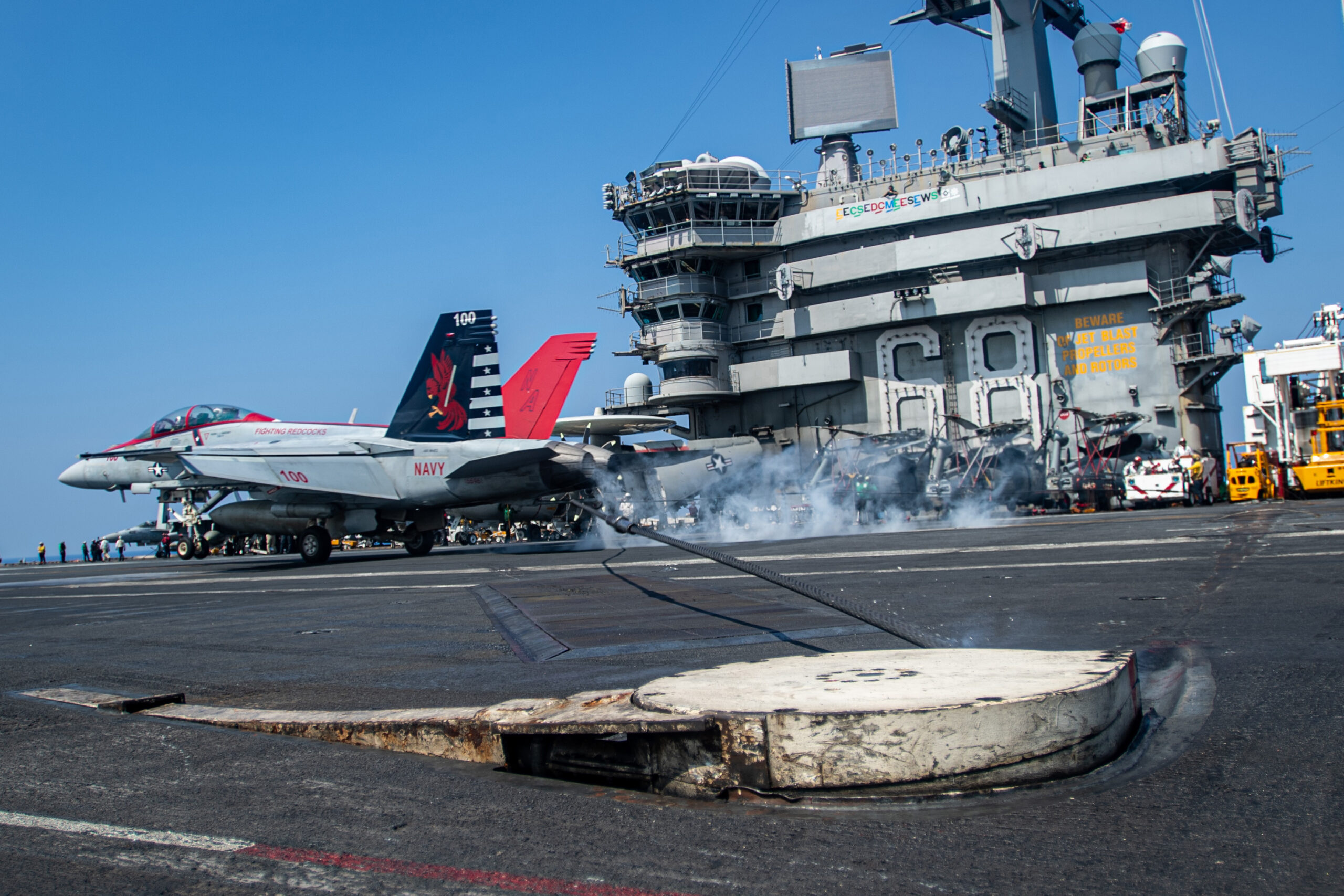USS Nimitz (CVN 68), the oldest-serving U.S commissioned aircraft carrier in the world, successfully completed its 350,000th arrested aircraft landing recently while sailing in the South China Sea, a milestone nearly 48 years in the making.
Nimitz is the first active U.S. Navy carrier in the fleet to reach this milestone. USS Dwight D. Eisenhower (CVN 69) has the next highest total of arrested landings at 326,600.
Capt. Craig Sicola, commanding officer of Nimitz, and Cmdr. Luke Edwards, commanding officer of the “Fighting Redcocks” of Strike Fighter Squadron (VFA) 22, piloted the landing in an F/A-18F Super Hornet from VFA-22 on the morning of April 22.
“I am honored and humbled to land this historic milestone for our ship. I dedicate this landing to the countless naval aviators who have flown before me, and it is a privilege to further the proud tradition of service that this distinguished aircraft carrier embodies,” Sicola said. “To the shipyard maintenance teams who put in countless hours to prepare this warship for sea, to the thousands of dedicated Sailors on board who sacrifice for their country, and to the families back home who support us along the way—‘teamwork is a tradition’ on Nimitz and we could not have accomplished this mission without the steadfast commitment to this historic ship.”
As first in its class, Nimitz is the namesake for all Nimitz-class aircraft carriers in the fleet. Over the decades, tens of thousands of Sailors have embarked on Nimitz to fulfill missions around the globe. Since commissioning nearly 50 years ago, Nimitz has sailed 30 deployments and served in countless operations and missions.
Nimitz serves as the flagship of the Nimitz Carrier Strike Group (NIMCSG). The NIMCSG is currently on a regularly-scheduled deployment in the U.S. 7th Fleet area of operations.
“As we sail through the South China Sea, we celebrate this once in a lifetime achievement, 350,000 arrested landings, over a hundred years of innovation in the U.S. aircraft carrier, and the determination, sacrifice and winning spirit of all past and present naval aviators and our Sailors” said Rear Adm. Christopher Sweeney, commander, Carrier Strike Group 11. “This landmark is a testament to the nation’s commitment to fly, sail and operate around the globe promoting peace and security just as ‘Old Salt-the Nimitz’ has done for the past 48 years.”
The 350,000th trap represents a significant moment in the history of the ship. Nimitz’s first arrested landing was conducted in 1975, the same year of the ship’s commissioning. Capt. Bryan Compton, Nimitz’s first commanding officer, made history by completing the first landing.
Although the ship has sailed in several oceans and has homeported in multiple locations, the constant throughout the decades has been the tenacity of the ship’s crew day in and day out—without which not a single landing could have been possible.
“Although aircraft are critical to our mission, the aviators and maintainers that fly and operate our aircraft are truly the reason for our success,” said Capt. Christopher Hurst, commander, Carrier Air Wing 17. “This milestone showcases our Sailors’ precision and operational excellence to execute hundreds of thousands of landings on Nimitz.”
Nimitz’s aircraft launch and recovery equipment (ALRE) division is responsible for operating and maintaining the ship’s catapults and arresting gear.
“We have been looking forward to achieving this milestone for a long time,” said Chief Aviation Boatswain’s Mate (Equipment) Robert Reed, leading chief petty officer of ALRE division. “The Sailors made all of this possible by manning our equipment and ensuring the proper execution of our mission. Their dedication and determination is inspiring, and I am proud to be a part of team Nimitz. This landing could not have been done without their commitment to the ship.”
Before celebrating the historic 350,000th arrested landing aboard Nimitz, flight deck personnel quickly got back to work. Sailors reset the arresting cable, taxied aircraft out of the landing area and reset the deck—there were still more aircraft to land.
Source : America’sNavy






